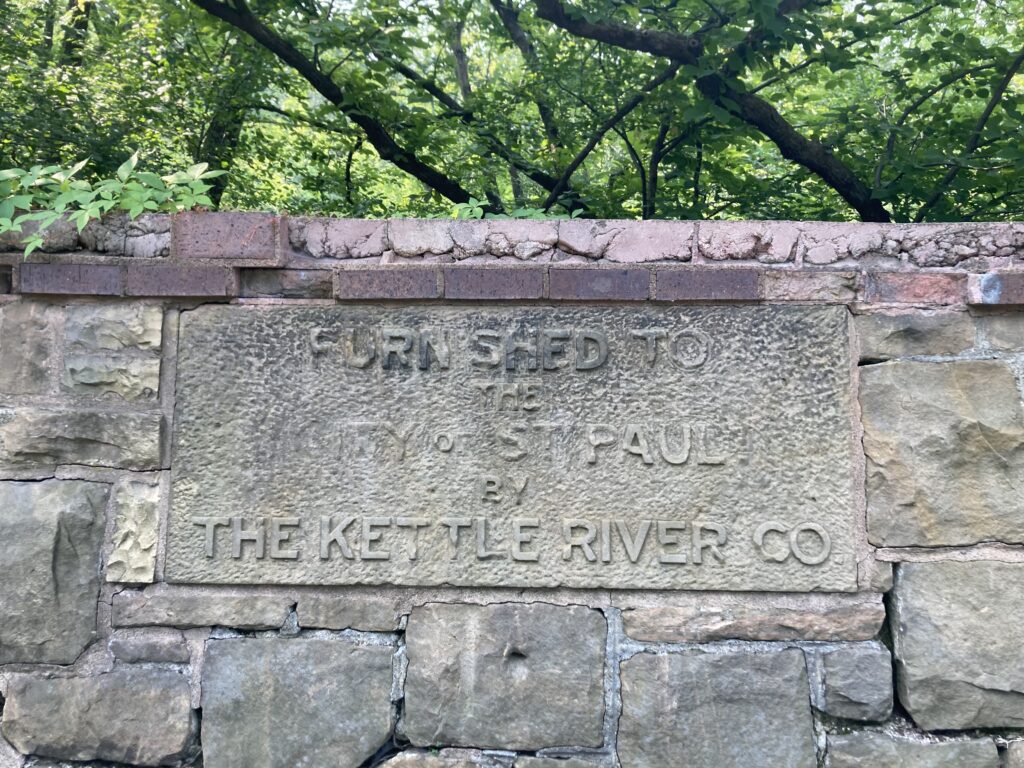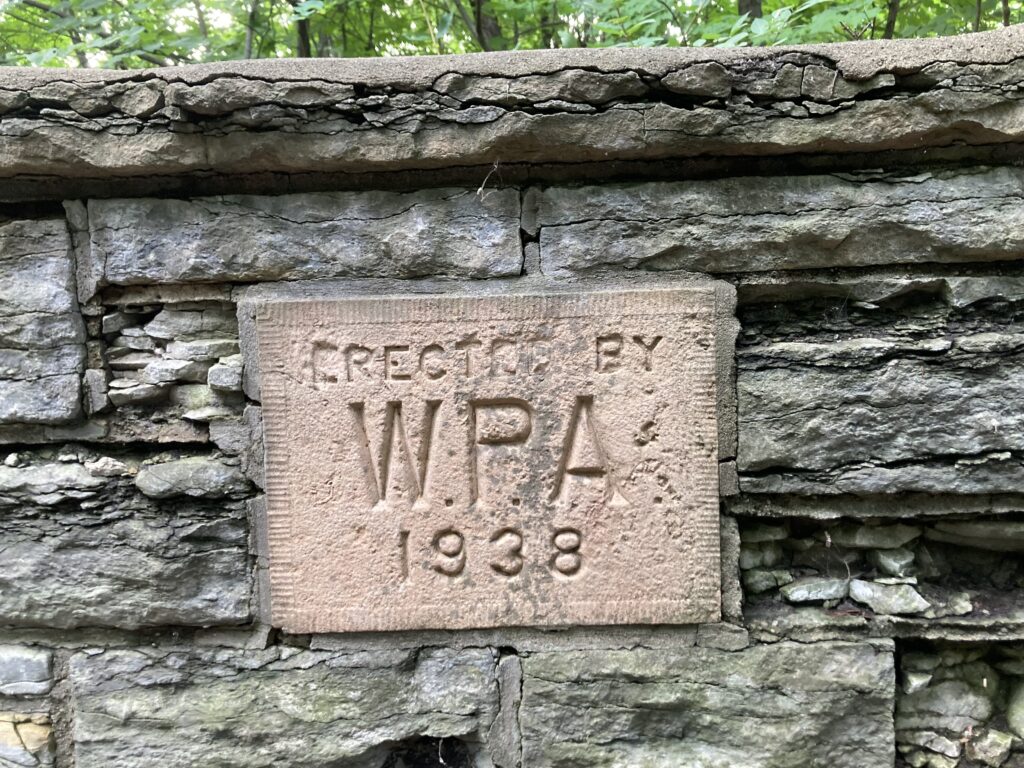3.5 miles
locks and dam #1
73 degrees
Another hard run. Hot! Lots of sweating and stopping to take walk breaks. Ran to the bottom of locks and dam #1 for a great view of the river. I can’t remember its color — blue, I think — but I remember the small waves on it and the faint wake from a long gone boat. Oh, and the single white buoy and the roar of rushing water one way and the ford bridge the other.
At the bottom of the locks and dam, I noticed some bright orange leaves:

Not the greatest picture, but I’ll post it anyway. So orange! Too soon!
Saw someone emerge from the trail that dips below the road to cross the path and wondered if they had just come up from the new trail that descends deeper into the gorge. Encountered 2, maybe 3, roller skiers, walkers, runners, a few bikers. Below the road I stopped to walk and listen to the acorns falling from the tree and thumping on the ground. Then started running again over acorn shells.
I thought about my Swimming, One Day in August project and had an idea: what if I tried swimming in bde maka ska and lake harriet? Or, some other lakes nearby? Or, one of the clearest lakes in the state, Square Lake, in Stillwater?
a few hours later: Hooray! Just received an email that all future open swims will be at Cedar! So as long as Scott can drive me over there, I don’t have to miss a single one.
a ramble on lake water testing
A revelation just last week. Minneapolis Parks tests the lake water weekly, and testing the water is better than not testing the water. But the slow and rigid system of testing only on Mondays and getting results on Tuesdays (e-coli) and Wednesdays (algae blooms) combined with the fickle changes in quality based on weather and other environmental factors, means the testing is not very accurate for what the conditions are at any given time. On an abstract level, it seems obvious to me that you can’t rely on tests to guarantee safe water, but on an experiential level — that is, being in the water swimming for over an hour at a time roughly 6 times a week for 11 summers — I needed an unquestioned faith in those tests and the park’s ability to let me know when it was/wasn’t safe to swim in order to get in the water.
And, mostly it is safe in the water. And it is clean. I get very irritated when someone who doesn’t know what they’re talking about says to me, eww, how can you swim in that dirty water!? Minneapolis Park workers and volunteers do an amazing job of keeping the water quality high. And this is partly due to their regular testing. But, these tests can’t guarantee anything.
What am I trying to do here? I’m not blaming the parks department; these tests are expensive and it would be difficult to test regularly enough to keep up with the quick shifts in wind and rain and the groundwater problems (like unstable sewer systems) that have existed from the beginning of the lake’s modern shape in the 1920s when workers excavated peat and used it to build up the surrounding neighborhood. Not to mention climate change and erratic weather and an excess of nutrients getting into the water from lawn fertilizers. And people feeding ducks who poop in the water which increases the amount of e-coli. No, I think Minneapolis Parks, especially Minneapolis Aquatics, are amazing.
All of this is complicated and messy with no easy answers. And it’s scary. I’ve been wondering for a few years when it’s going to happen — because it seems inevitable that it will happen — that lakes will no longer be safe to swim in, unfiltered outside air will no longer be safe to breathe. And this is how it happens, I think. Not all of sudden, but slowly. More days with bad test results and beach closures. Or inaccurate test results and water that is pea-soup green and slimy and that might get you sick.
I suppose this last paragraph sounds depressing, and it is, and also it isn’t. I love swimming in lake nokomis, and I would do a tremendous amount to keep swimming in it. Maybe it’s time to figure out what I can do to help keep it safe.

